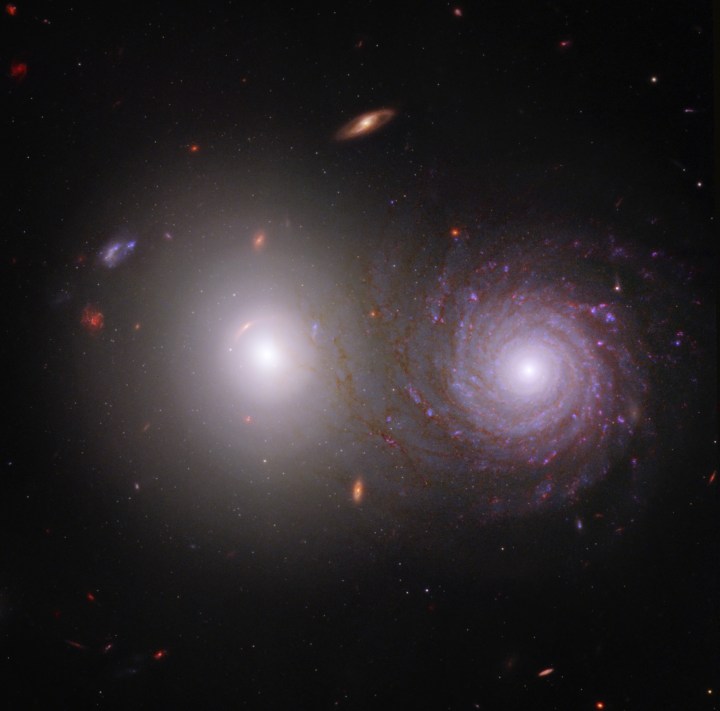After two images we shared last week showed how scientific knowledge can be increased by tools like the Hubble Space Telescope and the James Webb Space Telescope imaging the same target separately, this week sees a project in which data from the two telescopes has been brought together.
Both telescopes were trained on the galaxy pair VV 191 and showed how light from the elliptical galaxy on the left filters through the dusty arms of the spiral galaxy on the right. That allowed researchers to learn about the dust in the spiral galaxy. “This is a rather unique opportunity to measure how much dust has been produced in this spiral galaxy, like our own, by previous generations of stars,” explained lead researcher Rogier Windhorst of Arizona State University in a statement. “Mind you that this is the kind of dust that the next generation of stars and planets, and in our case people, are also formed from.”

Hubble observes primarily in the visible light and ultraviolet portions of the electromagnetic spectrum, while Webb looks at the infrared range which is beyond human vision. In pairing up data from both telescopes, researchers used Hubble data for bluish tones in the image and Webb data to pick up on the dust features.
“We got more than we bargained for by combining data from NASA’s James Webb Space Telescope and NASA’s Hubble Space Telescope,” Windhorst said.
That included some surprising findings, like a red smudge to the northwest position of the left-hand galaxy. That smudge is actually another extremely distant galaxy, which has been magnified and distorted in a phenomenon called gravitational lensing. You can even just about see its reflection as a dot at the southeast position relative to the foreground galaxy.
“I find it astonishing how Webb can provide for completely unexpected findings, such as the lensed galaxy behind the elliptical galaxy in the VV191 system, with relative ease and with only half an hour of exposure time,” said another of the researchers, Jake Summers, also of Arizona State. “The resolution of Webb never ceases to amaze me — I was blown away by the fact that it can resolve individual globular clusters in the main elliptical galaxy.”
The research has been submitted to The Astrophysical Journal but has not yet been peer-reviewed or published.
Editors’ Recommendations
Credit: Source link


Comments are closed.